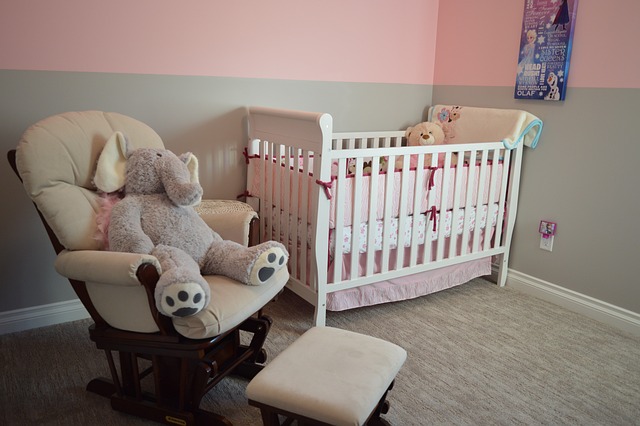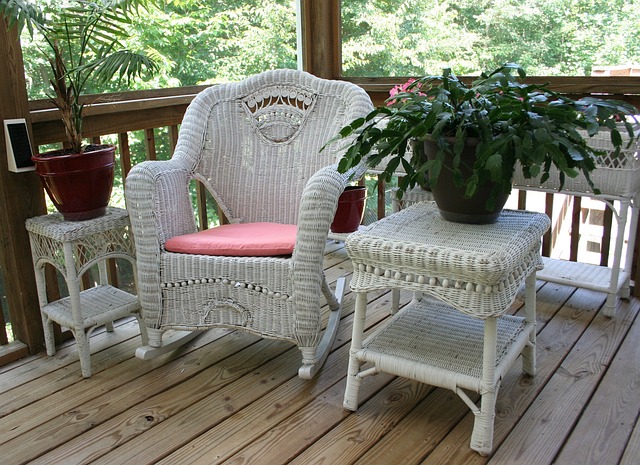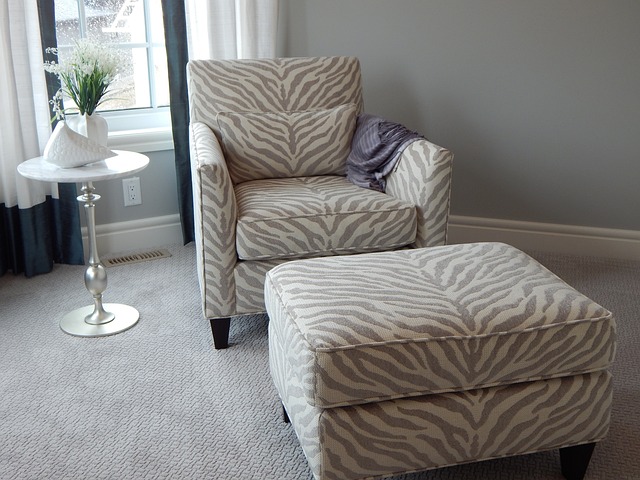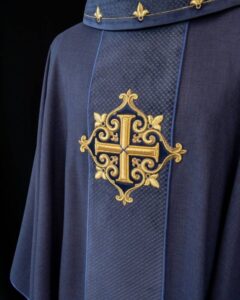The History and Invention of Folding Chairs
15 min read
Folding chairs have a long and fascinating history that dates back centuries. These versatile pieces of furniture have evolved over time, incorporating various design elements and technological advancements. In this article, we will delve into the captivating story of the history and invention of folding chairs, shedding light on their innovative features and enduring appeal. The origins of folding chairs can be traced back to ancient civilizations, where they were primarily used for ceremonial purposes.
The Egyptians, renowned for their architectural prowess, were among the first to develop folding chairs. These chairs were often crafted from wood, featuring intricate carvings and embellishments that reflected the wealth and status of their owners. As civilizations advanced, so did the design and functionality of folding chairs. The Greeks, known for their emphasis on comfort and aesthetics, introduced a more ergonomic approach to chair design. They incorporated curved backrests and contoured seats, providing enhanced support and comfort. These chairs were often constructed using a combination of wood and metal, showcasing the Greeks’ mastery of both materials. In the Middle Ages, folding chairs gained popularity in Europe, particularly among royalty and the nobility. These chairs were often lavishly adorned with ornate fabrics and precious materials, signifying the wealth and power of the individuals who used them. However, it wasn’t until the Renaissance that folding chairs started to become more accessible to the general population. During the Renaissance period, advancements in woodworking techniques and joinery allowed for the mass production of folding chairs. Craftsmen began experimenting with different folding mechanisms, leading to the development of innovative designs. One such mechanism was the scissor action, which allowed chairs to fold and unfold effortlessly. These chairs featured interlocking wooden slats or metal bars that created a sturdy framework, ensuring stability when in use. The 19th century witnessed significant progress in the field of folding chair technology. With the advent of the Industrial Revolution, new materials such as wrought iron and steel became readily available.
These materials revolutionized chair construction, enabling the production of lightweight and durable folding chairs. Additionally, the invention of the sewing machine facilitated the production of intricately patterned fabrics, elevating the aesthetic appeal of folding chairs. The 20th century brought about further advancements in folding chair design. The introduction of tubular steel and aluminum alloys allowed for the creation of sleek, minimalist designs that were both functional and visually appealing. Folding chairs became synonymous with versatility and portability, making them ideal for various settings, from outdoor events to indoor gatherings. Today, folding chairs continue to be an integral part of our lives. They are widely used in various settings, including conferences, schools, theaters, and outdoor recreational activities. Modern folding chairs often feature ergonomic designs, lightweight materials, and innovative folding mechanisms, ensuring optimal comfort and ease of use. In conclusion, the history and invention of folding chairs showcase the remarkable evolution of this versatile piece of furniture. From their ceremonial origins in ancient Egypt to the sleek and functional designs of the present day, folding chairs have stood the test of time. Their continued popularity is a testament to their practicality, adaptability, and enduring appeal. Whether you’re attending a conference or hosting a backyard barbecue, folding chairs offer a convenient seating solution that combines functionality with style.
When were folding chairs first invented?
The history of folding chairs dates back to ancient civilizations, where early forms of portable seating were developed to address the need for flexible seating arrangements. The exact origin of folding chairs is difficult to determine with certainty, as they have evolved over time and across various cultures. However, historical evidence suggests that folding chairs have been in use for centuries, undergoing advancements and refinements along the way. One of the earliest known examples of folding chairs can be traced back to ancient Egypt, around 2000 BC. These chairs were constructed from wood and featured a simple folding mechanism, allowing them to be conveniently folded and stored when not in use. The Egyptians, renowned for their craftsmanship, also adorned these chairs with intricate carvings and hieroglyphics, showcasing their artistic prowess.
As civilizations progressed, folding chairs became prevalent in other ancient cultures as well. In ancient Greece, folding chairs, known as “klismos,” gained popularity during the 5th century BC. These chairs were constructed from wood and featured a curved backrest and tapered legs, providing both comfort and portability. The Greeks recognized the practicality of folding chairs, using them extensively during public gatherings and social events. During the Middle Ages, folding chairs continued to be utilized, particularly in Europe. The designs became more elaborate and ornate, often incorporating luxurious materials such as velvet, silk, and gold leaf. These chairs were reserved for the nobility and played a significant role in formal ceremonies and banquets. The Renaissance period witnessed further advancements in folding chair design. Innovative mechanisms, such as hinge systems and locking devices, were introduced, allowing for increased stability and ease of folding. The artistic influence of the time also led to intricately carved designs and decorative embellishments, transforming folding chairs into pieces of art. The Industrial Revolution in the 18th and 19th centuries brought about significant changes in manufacturing techniques and materials, leading to the mass production of folding chairs. Metal frames, particularly those made of wrought iron and later steel, became popular due to their strength and durability. These chairs found applications in various settings, from outdoor gatherings to military camps, providing convenient and portable seating solutions. In the 20th century, with advancements in materials and engineering, folding chairs underwent further improvements.
Lightweight materials such as aluminum and plastic were introduced, making the chairs even more portable and easier to handle. Folding chairs became a common sight in schools, theaters, stadiums, and other public venues, offering temporary seating options that could be easily stored when not needed. Today, folding chairs continue to be an essential piece of furniture in both indoor and outdoor settings. With advancements in ergonomic design and manufacturing processes, modern folding chairs offer enhanced comfort and stability. They come in a wide range of styles, sizes, and materials to suit various needs and preferences. In conclusion, while the precise origin of folding chairs remains somewhat elusive, their existence can be traced back to ancient civilizations such as Egypt and Greece. Over time, folding chairs have evolved and undergone significant improvements, reflecting the changing needs and technological advancements of each era. From ancient wooden designs to contemporary lightweight models, folding chairs have stood the test of time, providing a practical and versatile seating solution for countless generations.

What is the origin of folding chairs?
The origin of folding chairs traces back to ancient civilizations, where ingenious mechanisms and designs were employed to create portable seating solutions. The evolution of folding chairs can be observed throughout history, with various cultures contributing to their development. This article delves into the intriguing journey of folding chairs, exploring their origins, evolution, and significance. The concept of portable seating can be traced as far back as ancient Egypt, where folding stools were used by pharaohs and nobles during ceremonial occasions and important gatherings. These early folding stools were often crafted from materials such as wood or ivory, featuring collapsible legs and a simple design that allowed for easy transportation and storage. In ancient Rome, the use of folding chairs became more widespread. The Roman folding chair, known as a “sella curulis,” was an important symbol of authority and power. These chairs were typically constructed from wood or metal, with an X-shaped frame that allowed them to be folded flat.
The sella curulis was reserved for high-ranking officials, such as magistrates and senators, and its use signified social status and prestige. As civilizations progressed, folding chairs continued to evolve. In medieval Europe, the concept of a portable chair gained popularity among the nobility and clergy. These chairs, often referred to as “faldstools,” featured intricate carvings and ornate decorations, showcasing the wealth and stature of their owners. Faldstools were commonly used during religious ceremonies and important events, providing a convenient seating option that could be easily transported. During the Renaissance period, folding chairs underwent further refinements. The introduction of hinges and more advanced folding mechanisms allowed for increased stability and convenience. Chairs with intricate folding mechanisms, known as “campaign chairs,” gained popularity among military commanders and explorers. These chairs were specifically designed for use in the field, offering comfort and mobility during long journeys or military campaigns. In the 19th century, the Industrial Revolution brought significant advancements in manufacturing techniques, leading to mass production of folding chairs. This made them more affordable and accessible to a wider range of people. Folding chairs became common in public spaces, theaters, and outdoor events, providing a practical seating solution that could be easily set up and stored away when not in use. Modern folding chairs have continued to evolve, incorporating innovative materials and designs. Lightweight materials such as aluminum and plastic are now commonly used, making folding chairs even more portable and durable.
Additionally, advancements in ergonomic design have enhanced the comfort and functionality of folding chairs, catering to various seating preferences and needs. Today, folding chairs are ubiquitous and versatile. They are extensively used in arenas, conference centers, schools, and outdoor events. Their practicality, portability, and ease of storage have made them a staple in both professional and recreational settings. In conclusion, the origin of folding chairs can be traced back to ancient civilizations, where the need for portable seating solutions led to the development of collapsible designs. From the ancient Egyptian stools to the Roman sella curulis, medieval faldstools, and modern lightweight folding chairs, this ingenious invention has evolved over centuries. The continuous refinement of folding chairs throughout history has made them an essential and widely utilized piece of furniture in today’s fast-paced and ever-changing world.

Who invented the first folding chair?
The invention of the first folding chair is an intriguing chapter in the history of furniture design. With its practicality and space-saving capabilities, the folding chair has become a staple in various settings, ranging from homes and offices to outdoor events and social gatherings. In this article, we delve into the origins of the folding chair and explore the question: Who invented the first folding chair?The concept of a folding chair can be traced back to ancient civilizations, where portable seating solutions were devised to address the need for flexibility and convenience.
However, it was not until the 15th century that the folding chair as we know it today began to take shape. One prominent figure associated with the invention of the first folding chair is John Murphy, an English designer and inventor. Murphy’s innovative approach to furniture design revolutionized the concept of portable seating. In the late 19th century, Murphy introduced a groundbreaking folding mechanism that allowed chairs to be easily collapsed and stored away when not in use. Murphy’s design incorporated a series of interconnected hinges and joints, enabling the chair to fold and unfold effortlessly. This folding mechanism, often referred to as the Murphy hinge, became the foundation for subsequent iterations of folding chairs. The Murphy hinge introduced a level of convenience that was previously unmatched. Its intricate engineering enabled the chair to transform from a sturdy, functional seating solution into a compact and portable form. This breakthrough innovation made folding chairs highly adaptable to various environments, making them a sought-after choice for both indoor and outdoor settings. Over the years, the design of folding chairs has evolved to enhance their durability, comfort, and aesthetic appeal. Different materials, such as wood, metal, and plastic, have been employed to meet diverse user preferences and requirements. Additionally, advancements in manufacturing techniques have led to the production of folding chairs with increased stability and load-bearing capacities. The invention of the first folding chair by John Murphy paved the way for a furniture revolution.
His pioneering design and engineering principles set the stage for countless innovations in the realm of portable seating. Today, folding chairs are ubiquitous, serving as versatile solutions for seating needs in a wide range of scenarios. In conclusion, the first folding chair was invented by John Murphy, an English designer and inventor, who introduced the revolutionary folding mechanism in the late 19th century. His innovative approach to furniture design transformed the concept of portable seating and laid the foundation for the development of folding chairs as we know them today. From ancient civilizations to modern times, the folding chair remains an indispensable piece of furniture, combining functionality, practicality, and space-saving qualities to meet the ever-changing needs of individuals and communities.

How have folding chairs evolved over time?
Folding chairs have witnessed a remarkable evolution over the years, adapting to changing needs and incorporating innovative technologies. From their humble beginnings as simple collapsible seats to today’s advanced designs, folding chairs have become an essential part of our lives, offering convenience, portability, and versatility. In this article, we will explore the fascinating history and evolution of folding chairs, highlighting the advancements and breakthroughs that have shaped their design and functionality.
- Early Origins and Basic Folding Mechanisms:
The concept of a portable chair that could be folded for easy storage can be traced back centuries. Ancient civilizations, such as the Egyptians and Romans, used rudimentary folding chairs made from wood or metal. These early designs typically featured hinged joints that allowed the chair to fold flat, making them suitable for transportation. - Utilitarian Innovations:
As civilizations progressed, folding chairs became more sophisticated in their construction. During the Renaissance period, chairs with X-shaped frames gained popularity. These designs incorporated slings or fabric seats, providing a more comfortable sitting experience. Additionally, some folding chairs included armrests and backrests, enhancing their practicality. - Advancements in Materials and Manufacturing:
With the Industrial Revolution came significant advancements in materials and manufacturing techniques, revolutionizing the folding chair industry. Lightweight and durable materials, such as tubular steel and aluminum, gradually replaced traditional wood, making chairs more portable and sturdy. Moreover, the advent of mass production enabled folding chairs to be manufactured at scale, making them more accessible to the masses. - Ergonomics and Comfort:
In the mid-20th century, folding chair designers began to focus on ergonomic considerations and user comfort. They introduced features like contoured seats, padded cushions, and adjustable backrests, allowing individuals to sit for extended periods without discomfort. These improvements made folding chairs more versatile, suitable for various environments such as homes, offices, and outdoor settings. - Space Optimization and Storage Efficiency:
As living spaces became increasingly compact, the demand for folding chairs that could maximize space utilization grew. Designers responded by creating chairs with clever space-saving mechanisms. One notable example is the “accordion-style” folding chair, which utilizes a folding technique inspired by musical instruments. Such chairs can fold down to a fraction of their size, facilitating easy storage and transportation. - Technological Integration:
In recent years, folding chairs have embraced technological advancements, integrating features like built-in USB ports, wireless charging capabilities, and even smart sensors for monitoring sitting posture and providing feedback. These innovations have transformed folding chairs into multifunctional devices, catering to the needs of modern, tech-savvy users.

What are the different types of folding chairs available?
Folding chairs have become an indispensable piece of furniture in various settings due to their portability and space-saving design. These versatile seating solutions come in a range of types, each catering to specific needs and preferences. In this article, we will explore the different types of folding chairs available on the market today, highlighting their features, functionalities, and potential applications.
- Metal Folding Chairs:
Metal folding chairs are known for their durability and strength. Constructed using materials such as steel or aluminum, these chairs offer excellent stability and load-bearing capacity. They often feature a simple, minimalist design, making them suitable for both indoor and outdoor events, conferences, and gatherings. Metal folding chairs may have padded seats and backrests for added comfort, and some models come with armrests or cup holders. - Plastic Folding Chairs:
Plastic folding chairs are lightweight and easy to clean, making them a popular choice for both indoor and outdoor use. They are made from high-density polyethylene (HDPE) or polypropylene (PP) materials, which are resistant to moisture, stains, and UV rays. These chairs are often stackable, allowing for convenient storage and transportation. Plastic folding chairs are commonly used in schools, community centers, and outdoor events like picnics or barbecues. - Wood Folding Chairs:
Wood folding chairs combine elegance with practicality. Crafted from various types of wood, such as beech, oak, or teak, these chairs offer a classic and timeless aesthetic. They are commonly seen in upscale venues, formal events, and dining establishments. Wood folding chairs can be stained or painted to match different décor styles, and they often feature comfortable cushioning or upholstered seats. - Padded Folding Chairs:
Padded folding chairs prioritize comfort and are an excellent choice for longer periods of sitting. They typically feature foam-filled cushions on the seat and backrest, providing a plush seating experience. These chairs are commonly used in conference rooms, lecture halls, and banquet halls, where attendees may be seated for extended periods. Padded folding chairs often come with additional features such as armrests, ergonomic designs, and built-in lumbar support. - Director’s Chairs:
Director’s chairs are a distinct type of folding chair known for their unique design and functionality. They feature a tall, upright backrest and a sturdy frame with sidebars for added stability. Director’s chairs often have canvas or fabric seats and backs, which can be customized with personalized logos or patterns. These chairs are commonly used in film sets, makeup studios, and as portable seating options for outdoor activities like camping or fishing. - Canopy Chairs:
Canopy chairs are designed for outdoor use, providing both comfortable seating and protection from the sun or light rain. They typically feature an attached canopy or umbrella that can be adjusted to shield the user from direct sunlight. Canopy chairs are often made from lightweight materials like aluminum or steel, and the seats and backrests are usually constructed with breathable fabric. These chairs are popular for outdoor concerts, sporting events, or beach outings. - Lounge Chairs:
Lounge chairs combine the convenience of a folding chair with the comfort of a recliner. They are designed for relaxation, featuring adjustable backrests and footrests. Lounge chairs often come with padded cushions, headrests, and armrests, allowing users to comfortably sunbathe or unwind by the poolside, on the beach, or in their own backyard. They are available in various materials, including metal, plastic, and wood.

Why are folding chairs popular for various events and gatherings?
Folding chairs have gained tremendous popularity for various events and gatherings due to their versatility, convenience, and practicality. These portable seating solutions have become an integral part of our social gatherings, conferences, weddings, outdoor events, and more. Their widespread use can be attributed to several factors that make them a preferred choice for event organizers and attendees alike. Firstly, folding chairs are highly adaptable to different settings and venues. Their lightweight and collapsible design make them easy to transport and set up in a variety of locations. Whether it’s a conference hall, outdoor park, or a backyard party, folding chairs can be effortlessly carried and arranged to accommodate varying seating needs.
Their portability allows for quick rearrangement or expansion of seating arrangements as per the event requirements. Secondly, folding chairs offer space-saving advantages, especially when compared to traditional fixed seating options. In venues where storage space is limited or multi-purpose functionality is necessary, folding chairs prove to be a practical choice. After the event, these chairs can be easily folded and stacked, occupying minimal space for storage or transportation. This flexibility is particularly beneficial for event organizers who need to optimize space utilization while maintaining a comfortable seating capacity. Furthermore, folding chairs come in a wide range of designs, materials, and styles to suit diverse preferences and event aesthetics. They can be found in various shapes, including rectangular, round, and square, and can be constructed using durable materials such as metal, plastic, or wood. The availability of different colors and finishes allows event planners to match the chairs to the overall theme or color scheme, enhancing the visual appeal of the event. The ergonomic design and comfort provided by folding chairs are also key factors contributing to their popularity. Manufacturers have made significant advancements in creating folding chairs with padded seats, backrests, and armrests, ensuring maximum comfort during extended periods of sitting. Additionally, some folding chairs incorporate features like adjustable heights or reclining positions, further enhancing the seating experience for attendees. In terms of cost-effectiveness, folding chairs offer an affordable seating solution for events of all sizes. Their relatively low manufacturing costs and the ability to purchase them in bulk make them a cost-efficient option for event organizers who need to accommodate large crowds. Instead of investing in permanent seating installations that may not be utilized consistently, event planners can opt for folding chairs as a practical and budget-friendly alternative.
The versatility and ease of maintenance of folding chairs also contribute to their popularity. Their lightweight nature makes them easy to clean, move, and store. In the case of outdoor events, folding chairs made from weather-resistant materials can withstand various weather conditions, making them suitable for extended outdoor use. Additionally, any damages or wear and tear can be easily addressed by replacing individual parts, ensuring the longevity of these chairs. To summarize, folding chairs have become popular for various events and gatherings due to their adaptability, portability, space-saving advantages, diverse design options, ergonomic comfort, affordability, and easy maintenance. These factors have made them a go-to choice for event organizers and attendees who value practicality and convenience. With their long history and continued innovation, folding chairs are likely to remain a staple in the world of event seating for years to come.






